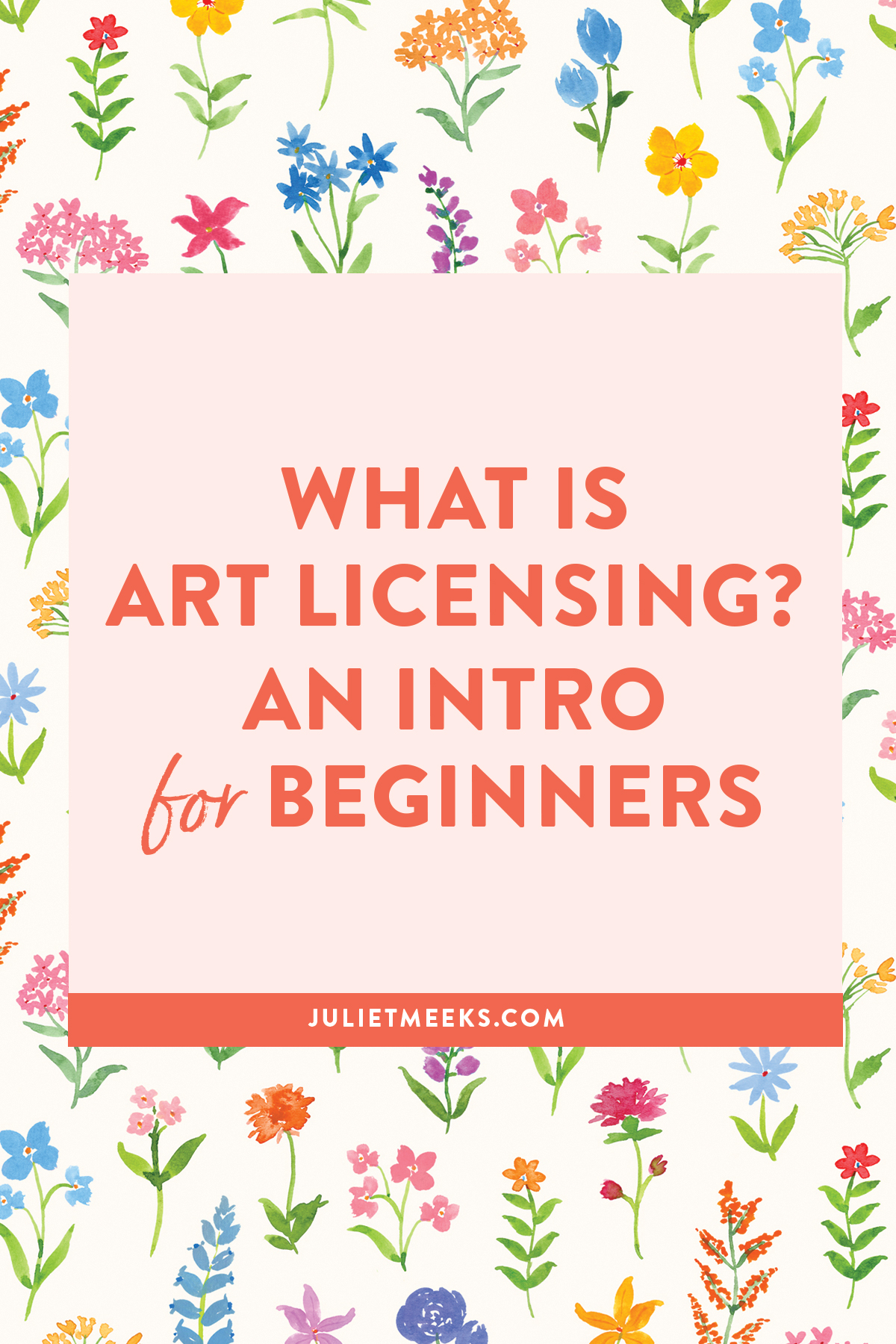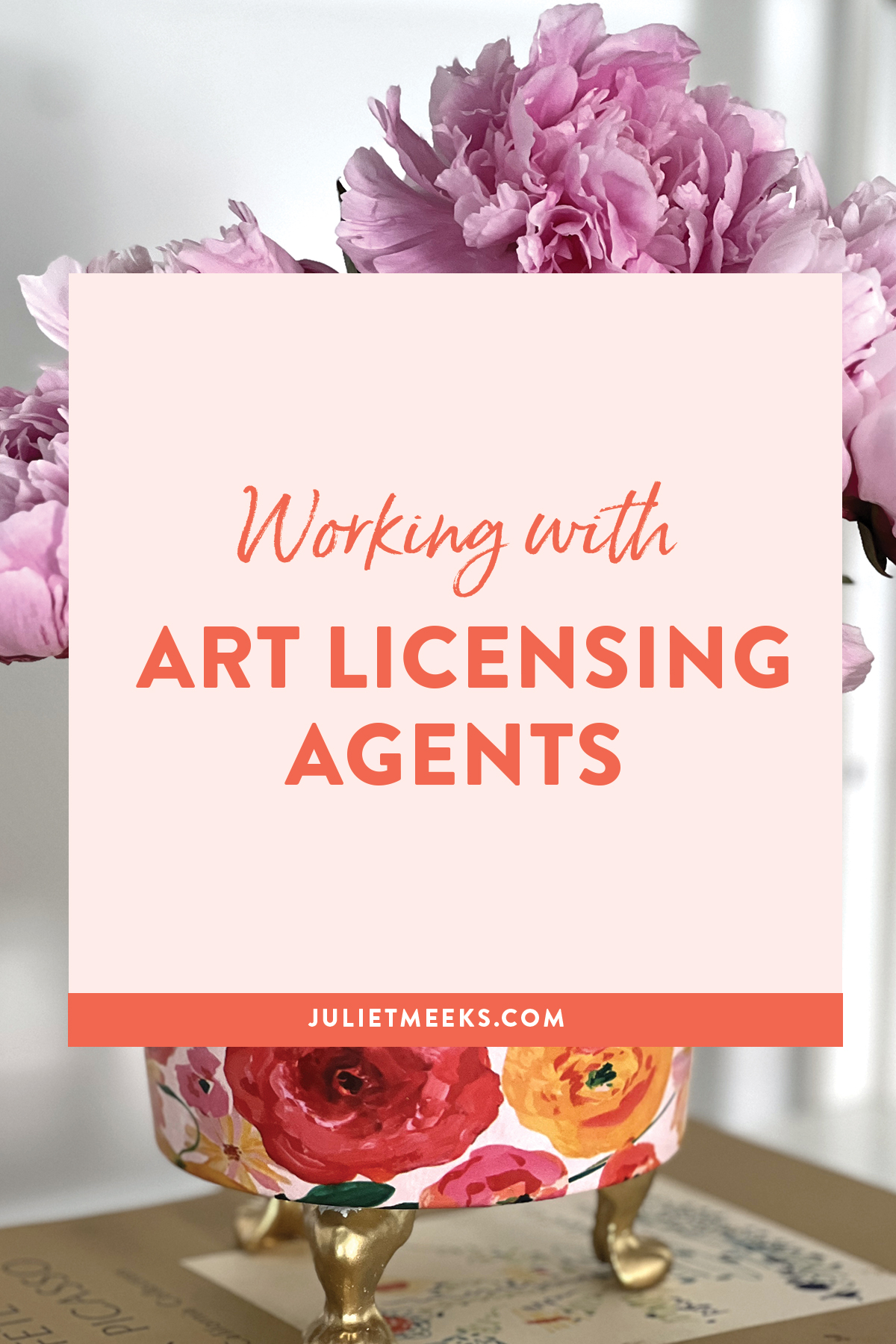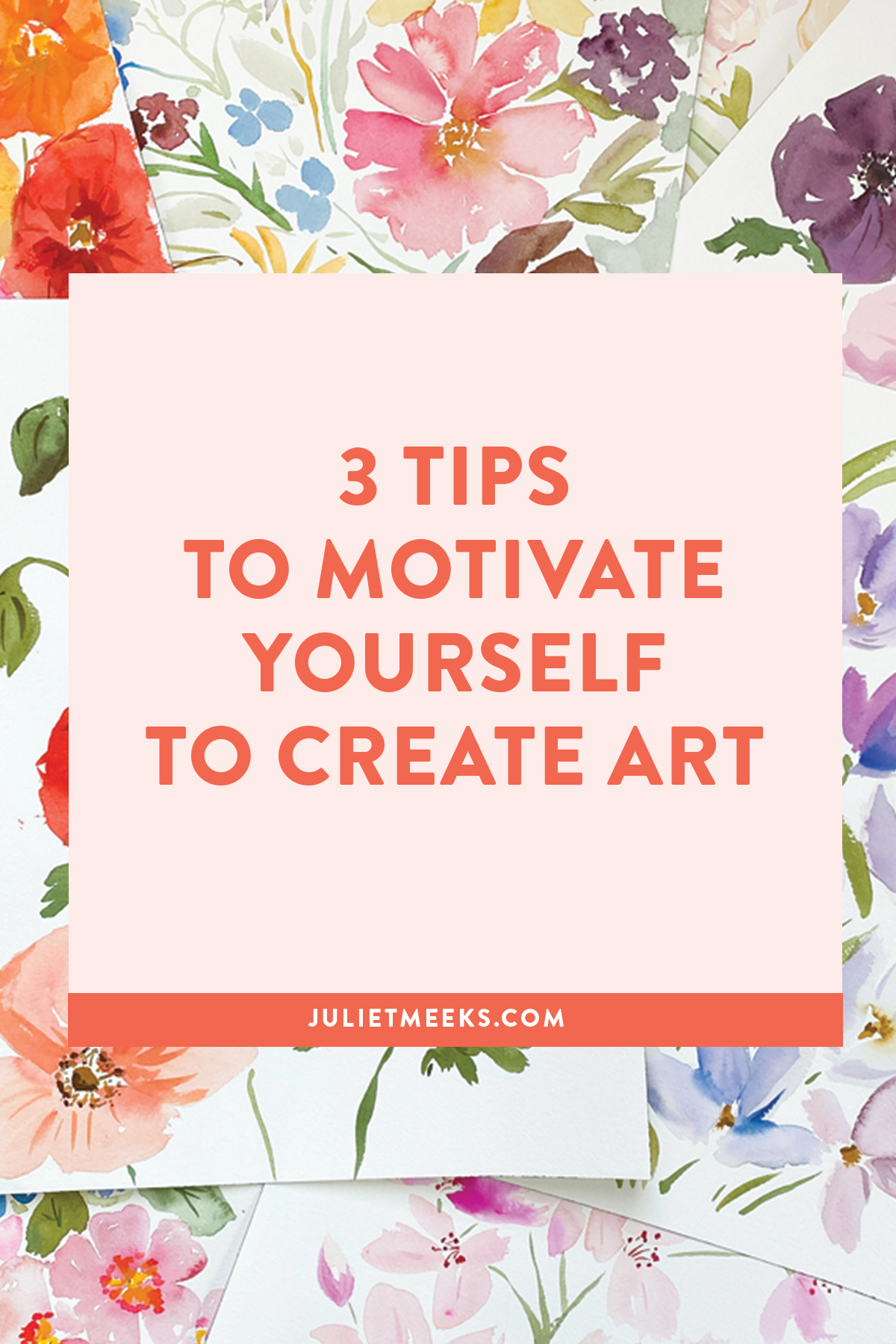Throughout April and May I’ll be focusing on one of my favorite art business topics: art licensing!There are many nuances to licensing and how to get licensing clients, so I’ll be sharing more about that during these few weeks.
So, you have some artwork you would like to see licensed – (do you know if you’re ready to license your artwork?) – or maybe you’re just curious about actually HOW to find licensing clients in the first place.
Well, today I’m going to share with you a few tips on something even more important than just finding clients: how to look for licensing clients that are ideal for your particular artwork.
Step 1: Define Your Art Style
Before we start looking for clients or customers that suit your artwork, we need to specifically describe your work. Understanding the attributes of your art will help you find the right target clients. Because appealing to everyone sounds exhausting, right?
Take a look at your work and answer these questions to help get started. You can have others answer these about your work, too!
- What medium do you use most often?
- Do you see any common themes to your art?
- What colors do you use most often?
- How does your artwork make you feel? Describe it in 3 adjectives.
- If your art was hanging in someone’s home, can you describe the surrounding decor? What kind of person owns the home? What other things or activities do they like? Where do they shop?
Getting as specific as possible will help you in the next steps.
Step 2: Identify Your Niche
Your artwork is already naturally appealing to a certain type of customer, store, or client. Eventually with more experience, you will get better at honing in on that marketable appeal to your target client!
So, thinking about your answers above…
What kind of products do you picture your artwork on? Examples: refined, elegant stationery; fun, kitschy tea towels; a bright laptop cover for teens?
And:
What kind of stores or businesses can you see your artwork in? Examples: a quirky little boutique; a museum gift shop; a big box store like Target?
Identifying a niche for your artwork and doubling down on creating work for that niche will bring you more success in that area. Again, we are not trying to appeal to everyone, because doing so will end up limiting you.
Step 3: Identify Your Target Clients
We want to then use all of these descriptors about your work so that you can narrow in on who your target clients actually are. Narrowing your focus to a select set of clients will help you be more successful in attracting them or when you pitch your work to them.
When they see you are creating artwork that fits their business or specific product types, they will be more likely to work with you because it will feel easier for them.
Once you have a solid understanding of where your art fits in, make a list of 15+ of your ideal clients. You can find these clients by looking at the bottom of products in stores to see who the manufacturer is, looking at other artists who do similar work to you and seeing who they collaborate with, or finding ways to make sure your artwork appeals to your favorite stores.
There are many other ways to go about finding your ideal clients (and more powerfully, getting them attracted to you), but I hope this was helpful for you to understand that the more targeted you can be in your goals, the more success and specific outcomes you will enjoy!






Thank you for sharing such helpful content. I’m looking forward to your mini course.
Very helpful! Looking forward to the mini course.